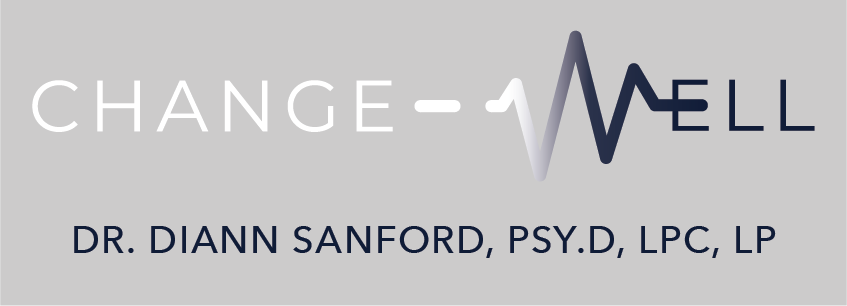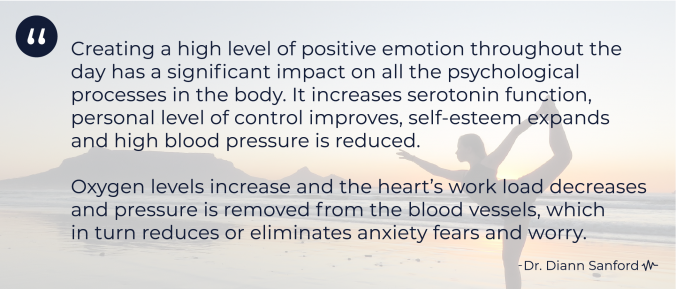Managing Anxiety and Fears without Medication, Dr. Diann Sanford, Psy.D, LPC, Therapist
 Author: Dr. Diann Sanford, Psy.D. LPC
Author: Dr. Diann Sanford, Psy.D. LPC
In this article, the author comments on the work of Dr. Sharprio and the implications it has in the therapeutic treatment of anxiety and fear. She defines meditation and contrasts it with mindfulness, and elaborates on incorporating mindfulness into the present medical model. Thus, she concludes by challenging individuals and practitioners to tackle anxiety and fears first using these treatment methods.
Mindfulness
Dr. Shaprio, a professor at Santa Clara University, a clinical psychologist is an internationally recognized expert on mindfulness (Shapiro, n.d.). She uses both current research in neuroscience and wisdom of ancient ways to illustrate her points. She makes it clear that perfection is not possible even though many of us spend much of our time trying to achieve this, and live in a continual state of self judgement. She articulates how each of us has great capacity to change and learn and how transformation is quite possible and within the reach of each individual no matter what the circumstances.
After years of studying how people transform, she found Mindfulness is one way people change (Shapiro, n.d.). She talked about her personal experience with spinal fusion, the pain, and her search for a way to cope and to live within her new body. This search led her across the world to learn Mindfulness from monks in Thailand at a meditation retreat. At first she struggled with being in the present moment as her mind keep wondering. She found the monks to be highly accepting and completely non-judgmental. They instructed her to feel her breath in and out of her nose. Our minds wander 47% of the time, so almost half of our lives we are missing, the moment right now as we wander somewhere else.
 Feeling the breath, being present, recognizing our feet on the ground, softening our eyes, allows us to be present in the moment. Attempting to remove all personal judgement, judgement of others, and negative self-talk is central to the practice mindfulness. As in reality, many of us are practicing judgement (anxiety provoking behaviors), frustration and impatience and not mindfulness. Within her personal experience, a monk told her “what you practice grows stronger”. The neuroscience backs this up as repeated behaviors create more and more neural pathways which in turn shape our brain; repeated practice visibly increases synaptic connections (Carlson & Birkett, 2016).
Feeling the breath, being present, recognizing our feet on the ground, softening our eyes, allows us to be present in the moment. Attempting to remove all personal judgement, judgement of others, and negative self-talk is central to the practice mindfulness. As in reality, many of us are practicing judgement (anxiety provoking behaviors), frustration and impatience and not mindfulness. Within her personal experience, a monk told her “what you practice grows stronger”. The neuroscience backs this up as repeated behaviors create more and more neural pathways which in turn shape our brain; repeated practice visibly increases synaptic connections (Carlson & Birkett, 2016).
A large part of mindfulness is training the brain to be right where you are. In response to this behavior, cortical thickening happens, new neurons grow and the brain becomes stronger (Shapiro, n.d.). Therefore, if you concentrate on judgement you are growing, strengthening judgement in your brain. Mindfulness is paying attention to ourselves and filling our thoughts with kindness and love. It is a welcoming of all parts of ourselves, a recognition that in every moment we are able to grow something good. Mindfulness is not just something you do when you meditate; it is a practice that is 24/7. Therefore the real question is what do you want to grow, strengthen or practice?
Meditation Defined
It is confusing as the words mindfulness and meditation are often used interchangeably (Shapiro & Shapiro, 2017). Meditation is usually practiced for a specific amount of time during the day. There are a variety of ways one can practice meditation through yoga, meditative exercise, prayer, meditative music, chanting and so forth. Often mediation exercises have specific themes such as developing loving kindness, forgiveness, open heart meditation, compassion and clear mind meditations (aimed at developing a clear and focused mind). Meditation is the intentional stilling (quieting) and renewing of the mind at specific planned intervals. This takes us to a different level of thinking; it transcends our current state, and involves a kinder way of thinking. This process returns us to our “right mind”.
Integration of Mindfulness in the Medical Model
Mindfulness could be immensely helpful if it were integrated into the medical model. Often the mere act of receiving medical services increases an individual’s anxiety, blood pressure and fear. Breathing becomes shallower. The constant worry, stress and release of cortisol complicate the situation. These negative emotions interfere with healing and recovery (Karren, Smith, & Gordon, 2014).
For example, if one looks at heart disease (Karren et al., 2014) new studies show that free-floating hostility, anger, cynicism, (anxiety, worry and fear) suspiciousness and excessive self-involvement all wreak havoc on the body. These cause exaggerated stress responses as the body begins to produce massive amounts of hormones as it prepares to fight of flee. These behaviors cause microvascular drainage in the blood vessel walls. This allows cholesterol in the blood to seep into the wall and creates plaque. It also increases coronary artery spasms which further narrows the vessels supplying oxygen to the heart muscle. An increase in blood pressure increases the heart’s workload and oxygen requirements which further constrict the blood vessels and increases high blood pressure. Blood platelets become sticky and further obstruct the narrowing arteries, increasing the risk for heart disease. All of these bodily changes leads to oxygen imbalances in the heart and can result in a heart attack.
Reducing (Karren et al., 2014) free-floating hostility, anger, cynicism suspiciousness and excessive self-involvement can all be done through the practice of positive psychology exercises, mediation exercises and the practice of mindfulness behaviors. Practicing gratitude, increasing activities that produce “flow”, reflecting on positive emotional experiences and successes, practicing forgiveness and intentionally (mindfully ) increasing positive social interactions by being present in the moment all decrease the stress responses in the body and triggers the release oxytocin (the love hormone).
Creating a high level of positive emotion (Karren et al., 2014) throughout the day has a significant impact on all the psychological processes in the body. It increases serotonin function, personal level of control improves, self-esteem expands and high blood pressure is reduced. Oxygen levels increase and the heart’s work load decreases and pressure is removed from the blood vessels. Why are we not already teaching every patient these practices? The integration of these meditation and mindfulness ways of being into the medical model would result in a higher individual locus of control, and lessen the need for medical interventions.
Summary
In conclusion, this author believes that the significance of mind and body practices such as mediation and mindfulness working with the medical cannot be understated. The practice of mindfulness is vital to overall good health and well-being. Furthermore, it has the capacity to alter the damaging influences of constant worry, fear and anxiety upon the body. Mindfulness is an intentional awareness that occurs 24/7, in contrast meditation is planned life affirming exercises that typically revolve around a positive theme (it can include spiritual thoughts and prayer). It is the opinion of this author that together, used regularly and practiced systematically these holistic and non medication approaches can have long lasting efficacy in the treatment of anxiety, worry and fear.
“Creating a high level of positive emotion throughout the day has a significant impact on all the psychological processes in the body. It increases serotonin function, personal level of control improves, self-esteem expands and high blood pressure is reduced.
Oxygen levels increase and the heart’s work load decreases and pressure is removed from the blood vessels, which in turn reduces or eliminates anxiety fears and worry”
– Dr. Diann Sanford, Psy.D, LPC
References
- Carlson, N. R., & Birkett, M. A. (2016). Physiology of Behavior (12th ed.). New York, N.Y.: Pearson Education, Inc.
- Compton, W. C., & Hoffman, E. (2013). Positive Psychology (2nd ed.). Belmont, CA: Wadsworth, Cengage Learning.
- Karren, K. J., Smith, N. L., & Gordon, K. J. (2014). Mind Body Health (5th ed.). New York, NY: Pearson Education, Inc.
- Shapiro, E., & Shapiro, D. (2017). Mindfulness & Meditation: What’s the Difference? Retrieved from https://medium.com/thrive-global/the-power-of-mindfulness-and-meditation-70fceeffa221
- Shapiro, S. (n.d.). The Power of Mindfulness: What you Practice Grows Stronger. Retrieved from http://www.drshaunashapiro.com/articles-videos/


 Author: Dr. Diann Sanford, Psy.D. LPC
Author: Dr. Diann Sanford, Psy.D. LPC

